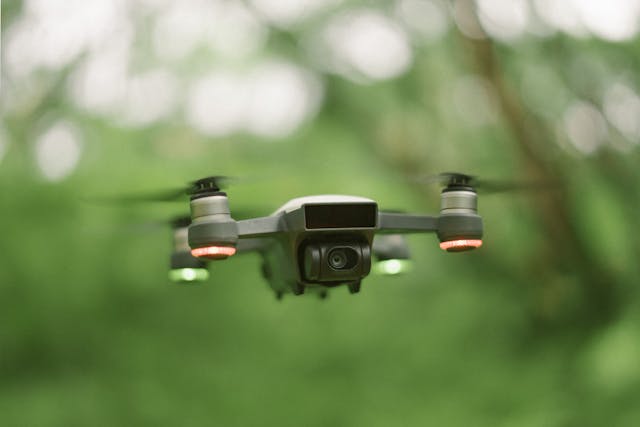- Autonomous vehicles require new infrastructure considerations like dedicated lanes, smart traffic systems, and integration with existing transportation networks.
- Renewable energy integration in roadways turns them into dual-purpose structures, generating clean energy besides fulfilling traditional roadway functions.
- Future urban development focuses on creating smart, sustainable, and resilient communities by leveraging advanced technologies and innovative planning strategies.
- Urban planners must adopt sustainable materials, smart traffic systems, green infrastructure, and advanced construction techniques for efficient urban environments.
- Continuous exploration of new solutions and staying informed about emerging trends are crucial for addressing urban development challenges effectively.
Introduction
In an era of rapid urbanization, the need for innovative solutions in urban development has never been more critical. Designing, constructing, and maintaining our roadways and communities significantly impacts environmental sustainability, economic efficiency, and societal well-being. As urban planners, we are responsible for exploring and implementing cutting-edge technologies and practices that address today’s challenges while paving the way for a resilient future.
Historical Context of Roadway and Community Development
Historically, roadways and communities’ development prioritized functionality and immediate needs over long-term sustainability. Traditional materials and construction methods were selected for their initial cost-effectiveness, often neglecting environmental impact and longevity. However, as our understanding of urban ecosystems evolves, so must our approaches to building and managing them.
Introduction to Main Themes
This article delves into several key themes: sustainable roadway materials, smart traffic management systems, green infrastructure, advanced construction techniques, and innovative stormwater management. Each theme represents a fundamental aspect of modern urban planning: improving our roadways and communities.
Sustainable Roadway Materials
Traditional vs. Innovative Materials
Traditional roadway materials, such as concrete and asphalt, have been the backbone of urban infrastructure for decades. While effective in the short term, these materials pose significant environmental challenges, including high carbon emissions and the heat island effect.
Benefits of Sustainable Materials
Innovative materials offer a promising alternative. Recycled asphalt, porous concrete, and other sustainable materials reduce environmental footprints, enhance durability, and contribute to the overall resilience of urban infrastructure.
Examples of Innovative Materials
- Recycled Asphalt Pavement (RAP): Utilizes old asphalt material, reducing landfill waste and conserving natural resources.
- Porous Concrete: Allows water to pass through, reducing runoff and promoting groundwater recharge.
- Geopolymer Concrete: Made from industrial waste materials like fly ash, it offers a lower carbon footprint than traditional Portland cement-based concrete.
Environmental Impact and Longevity
These materials minimise environmental impact and extend roadways’ lifespan, reducing maintenance costs and disruptions. Sustainable materials are crucial for creating resilient urban environments that can withstand the pressures of climate change and urban growth.
Smart Traffic Management Systems
The Need for Intelligent Traffic Solutions
Traffic congestion remains a persistent issue in urban areas, leading to wasted time, increased pollution, and heightened stress among commuters. Traditional traffic signals and systems often fail to adapt to real-time conditions, exacerbating these problems.
Challenges with Traditional Systems
Traditional traffic management systems are typically static and reactive, struggling to keep pace with dynamic traffic patterns and peak-hour surges. This inefficiency demands innovative solutions.
Advancements in Traffic Technology
Real-Time Data Collection and Analytics
Modern smart traffic management systems leverage sensors, cameras, and connected devices to collect real-time traffic data. This information is then analyzed using artificial intelligence (AI) and machine learning algorithms to optimize traffic flow.
Adaptive Traffic Control Systems
Adaptive traffic control systems respond to real-time data, adjusting signal timings and routing to alleviate congestion and improve safety. For example, systems like SCATS (Sydney Coordinated Adaptive Traffic System) and SCOOT (Split Cycle Offset Optimization Technique) have shown promising results in various urban settings.
Benefits for Congestion Reduction and Safety
Smart traffic solutions can significantly reduce congestion, lower emissions, and enhance road safety. These systems create smoother, more efficient transportation networks, benefiting commuters and the environment.
Green Infrastructure and Urban Planning
Integration of Green Spaces
Green infrastructure integrates natural elements into urban environments, promoting sustainability and enhancing quality of life. Urban planners play a crucial role in designing and implementing these spaces.
Importance of Urban Green Spaces
Green spaces offer numerous benefits, including improved air quality, reduced heat island effect, and enhanced mental and physical well-being for residents. They provide recreational opportunities and serve as community gathering points.
Examples of Green Infrastructure
- Green Roofs: Vegetated rooftops that reduce energy consumption, manage stormwater and improve air quality.
- Urban Forests: Dense tree plantings that provide shade, reduce noise pollution, and support biodiversity.
- Rain Gardens and Bioswales: Landscape elements designed to manage stormwater runoff, filter pollutants, and enhance aesthetic appeal.

Impacts on Community Well-Being and Environment
Green infrastructure fosters healthier, more vibrant communities. It mitigates environmental challenges, supports ecological balance, and enhances urban areas’ overall aesthetic and social value.
Advanced Construction Techniques
Modern Construction Methods
The construction industry is experiencing a revolution driven by technological advancements. Modern construction methods prioritize efficiency, sustainability, and safety.
Prefabrication and Modular Construction
Prefabrication and modular construction involve assembling building components off-site and transporting them for final installation. These methods reduce construction time, minimize waste, and improve quality control.
Use of Automation and Robotics
Automation and robotics are transforming construction processes. Drones, 3D printers, and autonomous machinery enhance construction projects’ precision, speed, and safety.

Impact on Construction Time, Cost, and Safety
Advanced construction techniques streamline project timelines, reduce labor costs, and enhance worker safety. They enable urban planners to deliver high-quality infrastructure projects efficiently and sustainably.
Stormwater Management and Roadway Design
Managing Stormwater Challenges in Urban Areas
Effective stormwater management is critical in urban areas to prevent flooding, erosion, and water pollution. Traditional methods often fail to address these challenges.
Traditional Methods vs. New Solutions
Traditional stormwater management methods, such as storm drains and retention ponds, struggle to cope with increasing urbanization and climate change.
Incorporating Stormwater Management into Road Design
Innovative stormwater management techniques can be integrated into roadway design to enhance resilience and sustainability.
Benefits for the Longevity of Roadways and Communities
Effective stormwater management protects roadways from damage, extends their lifespan, and enhances community resilience. Techniques like bioswales and permeable pavements reduce runoff, filter pollutants, and promote groundwater recharge.
Example Techniques
- Bioswales: Vegetated channels that capture and filter stormwater, reducing runoff and improving water quality.
- Permeable Pavements: Pavement materials that allow water to pass through, reducing surface runoff and promoting natural infiltration.
Future Trends in Roadway and Community Innovations
Emerging Trends and Technologies
Emerging trends and technologies, which promise to revolutionize infrastructure development and community living, are shaping the future of urban planning.
Autonomous Vehicles and Infrastructure Impact
Autonomous vehicles (AVs) are poised to transform transportation networks. Urban planners must consider AV integration’s infrastructure needs and implications, such as dedicated lanes and smart traffic systems.
Renewable Energy Integration in Roadways
Innovative projects are exploring the integration of renewable energy sources into roadway infrastructure. Solar roads, for example, generate clean energy while providing traditional roadway functions.
Predictions for the Future of Urban Development
The future of urban development lies in creating smart, sustainable, and resilient communities. By embracing innovation and technology, urban planners can design cities that meet the evolving needs of residents and the environment.
Conclusion
Innovative roadway and community development solutions are essential for creating sustainable, efficient, and resilient urban environments. These innovations offer numerous benefits for urban planners and communities, from sustainable materials and smart traffic management systems to green infrastructure and advanced construction techniques.
The journey toward innovative urban development is ongoing. Urban planners must stay informed about emerging trends and continuously explore new solutions to address the challenges of modern cities.







